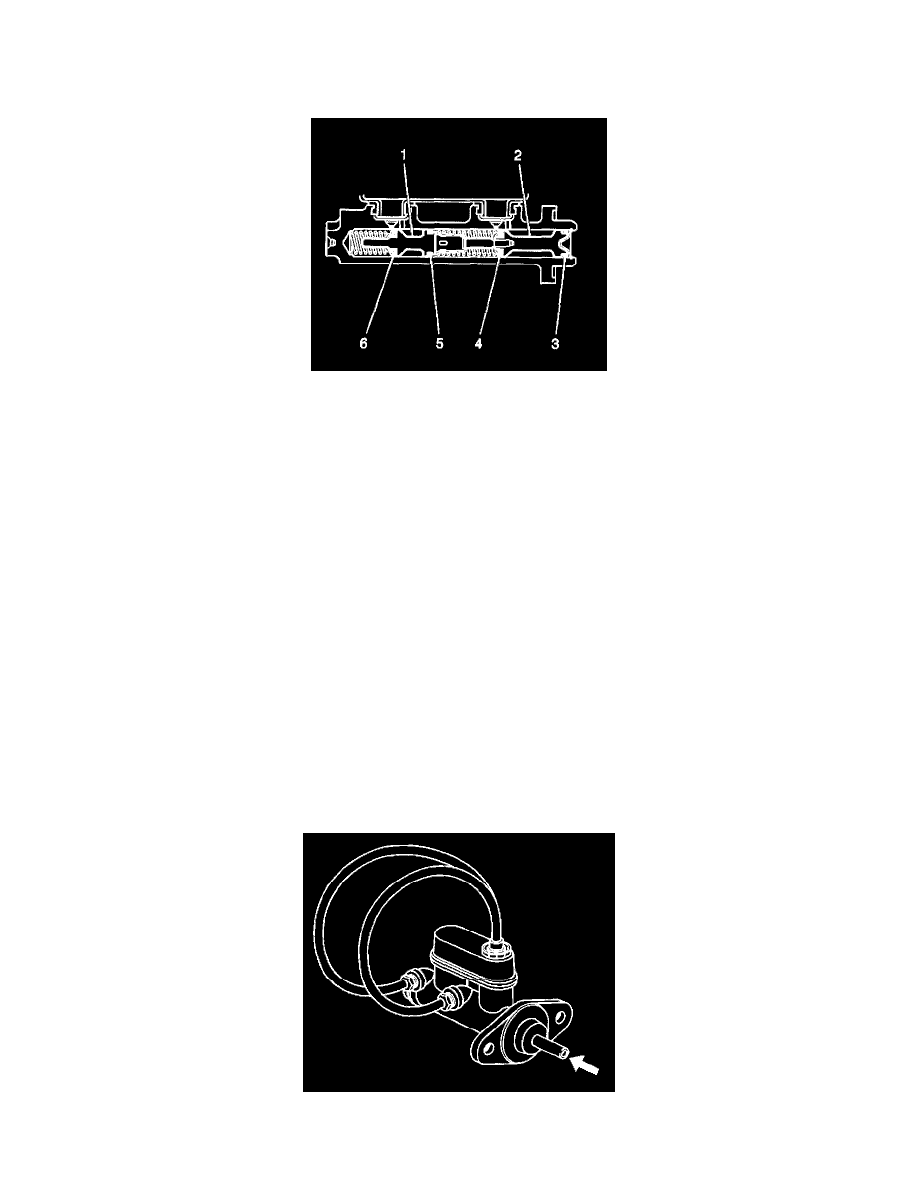Silhouette FWD V6-3.4L VIN E (2004)

Assembly Procedure
Important: Do not use abrasives to clean the brake master cylinder bore.
1. Clean the interior and exterior of the master cylinder, the secondary piston (1), and the return spring in denatured alcohol, or equivalent.
2. Inspect the master cylinder bore, inlet and outlet ports, the secondary piston (1), and the return spring for cracks, scoring, pitting, and/or corrosion.
Replace the master cylinder if any of these conditions exist.
3. Dry the master cylinder and the individual components with non-lubricated, filtered air.
4. Lubricate the master cylinder bore, the secondary piston (1), the return spring, and all of the individual overhaul components with Delco Supreme
11(R), GM P/N 12377967 (Canadian P/N 992667), or equivalent DOT-3 brake fluid from a clean, sealed brake fluid container.
5. Assemble the lubricated, now primary seal (6) and retainer, and new secondary seal (5) onto the secondary piston.
6. Install the lubricated return spring and secondary piston assembly (1) into the cylinder bore.
7. Install the lubricated, new primary piston assembly (2) into the cylinder bore.
8. Using a smooth, round-ended tool, depress the primary piston (2) and install the new piston retainer.
9. Install the master cylinder reservoir to the master cylinder.
10. Install the reservoir cap and diaphragm to the reservoir.
11. Install the master cylinder to the vehicle.
Master Cylinder Bench - Bleeding
Master Cylinder Bench Bleeding
Caution:
Refer to Brake Fluid Irritant Caution.
Notice:
Refer to Brake Fluid Effects on Paint and Electrical Components Notice.
Notice:
When adding fluid to the brake master cylinder reservoir, use only Delco Supreme 11 GM P/N 12377967 (Canadian P/N 992667), or
equivalent DOT-3 brake fluid from a clean, sealed brake fluid container. The use of any type of fluid other than the recommended type of
brake fluid, may cause contamination which could result in damage to the internal rubber seals and/or rubber linings of hydraulic brake
system components.
1. Secure the mounting flange of the brake master cylinder in a bench vise so that the rear of the primary piston is accessible.
2. Remove the master cylinder reservoir cap and diaphragm.
